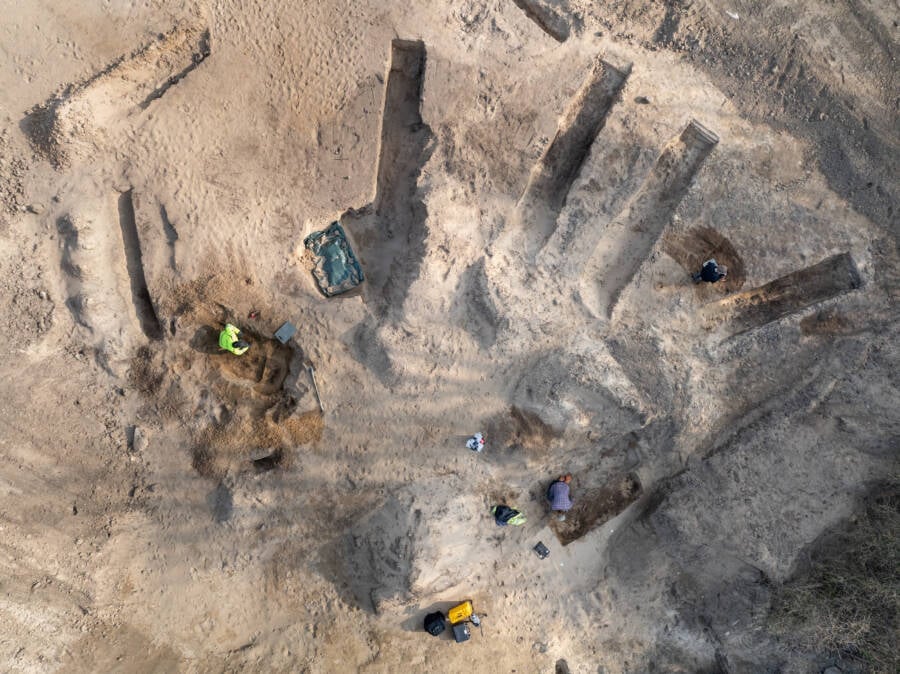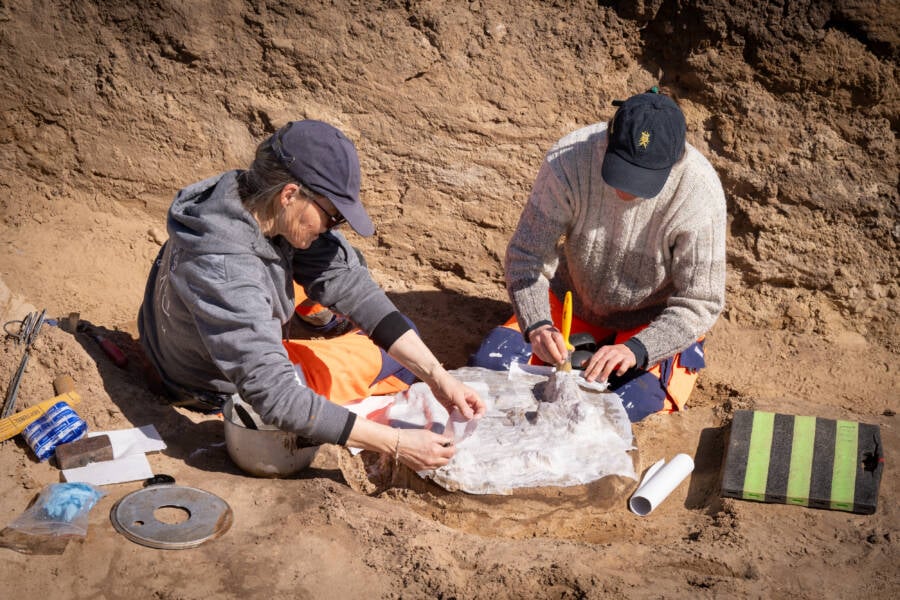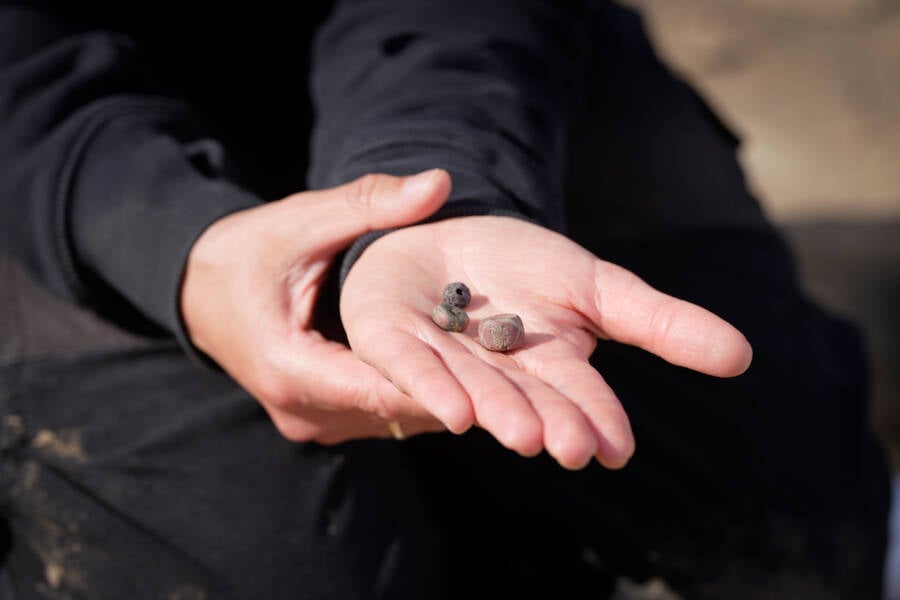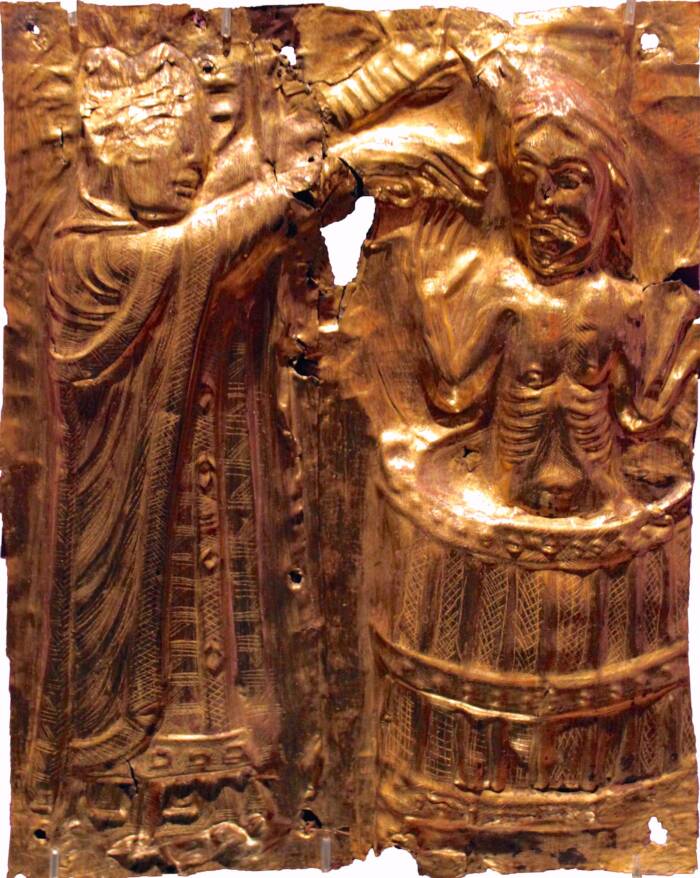At least 30 graves and a collection of grave goods were found in Lisbjerg, Denmark, by chance during a construction project.

Moesgaard MuseumThe excavation site in Lisbjerg, Denmark.
A construction project in Lisbjerg, Denmark, took a surprising turn when work at the site turned up dozens of 10th-century Viking graves. Not only are the burials packed with incredible grave goods, but archaeologists suspect that they are linked to a noble Viking family.
The graves may even possibly have a connection to Harald Bluetooth, the Viking king who reigned from roughly 958 to 986 and introduced Christianity to the region.
The Viking Graves Uncovered In Lisbjerg

Moesgaard MuseumArchaeologists carefully excavating a coffin that was found at the site.
According to the Moesgaard Museum, the Viking graves were found in Lisbjerg, Denmark, near the location of a previously discovered Viking farm.
The 30 graves at the site date back to the second half of the 10th century and are packed with grave goods. Archaeologists found pearls, coins, ceramics, and an “unusual box” containing gold thread and a pair of scissors. They also found human remains, including teeth and bones, and the coffin of a woman who was buried with ornaments and other personal belongings.
According to the museum, the graves are different sizes and hold various types of grave goods. This is possibly an indication that people “of varying social status” were buried together, which in turn suggests that the burial ground might have been for a “noble family and their slaves.” It’s likely that the noble family is connected with the nearby farm, Stormandsgården.

Moesgaard MuseumBeads found within the Viking graves in Lisbjerg.
“The burial site is most likely associated with the nobleman’s farm in Lisbjerg from the Viking Age [eighth to 11th centuries], which is located less than a kilometer from the burial site,” Mads Ravn, the head of local cultural heritage at the Moesgaard Museum, remarked. “The objects we have found in the graves tell us that the buried are people of high status — it could be the extended family from the farm itself that is buried here.”
Indeed, archaeologists suspect that the noble family may have been connected in some way to Harald Bluetooth, the 10th-century Viking king.
A Possible Connection To Harald Bluetooth
Given that the Viking graves in Lisbjerg date back to the second half of the 10th century, it’s possible that the nobles buried there had a connection to Harald Bluetooth, perhaps as earls or stewards tasked with managing the region.

Anagoria/Wikimedia CommonsA depiction of Harald Bluetooth’s baptism. Though he introduced Christianity to the region, archaeologists classified the dozens of Viking graves found in Lisbjerg as “pagan” graves.
Bluetooth, who came to power in 958, ruled over many important changes in his kingdom. He introduced Christianity to Denmark, oversaw the unification of the country, and became the leader of Norway after the assassination of King Harald Greycloak. (The technology Bluetooth is named for him, in the hopes that technology would unite the world much as the king united Denmark.)
As such, the Viking graves found in Lisbjerg are connected to the larger history of the Vikings — as well as the local history of the region. The Viking farm Stormandsgården, enclosed with a “distinctive palisade fence” and a 10-foot “entrance portal pointing south,” offered an easy connection to Aarhus via the old main road. Perhaps the farm, which stretched across almost five acres, was the home of the noble family, and the recent graveyard, roughly half a mile away, was the family’s cemetery.
In any case, the collection of finds in the region over the last several decades tells an exciting story about the region’s Viking history. Taken together, they offer a close look at how Vikings in the 10th century lived — and died.
“The finds in Lisbjerg are part of a series of previous fine finds in the Aarhus area,” Kasper H. Andersen, a historian at Moesgaard, remarked. “Together, they paint the picture of an aristocratic environment that was linked to royal power, and which was part of the Vikings’ vast and dynamic world.”
After reading about 10th-century Viking graves that were found in Denmark during a construction project, learn about the Viking berserkers, the wild and fierce Viking warriors who fought under the influence of hallucinogens. Or, discover the story of Harald Hardrada, the last great Viking king of Norway.





